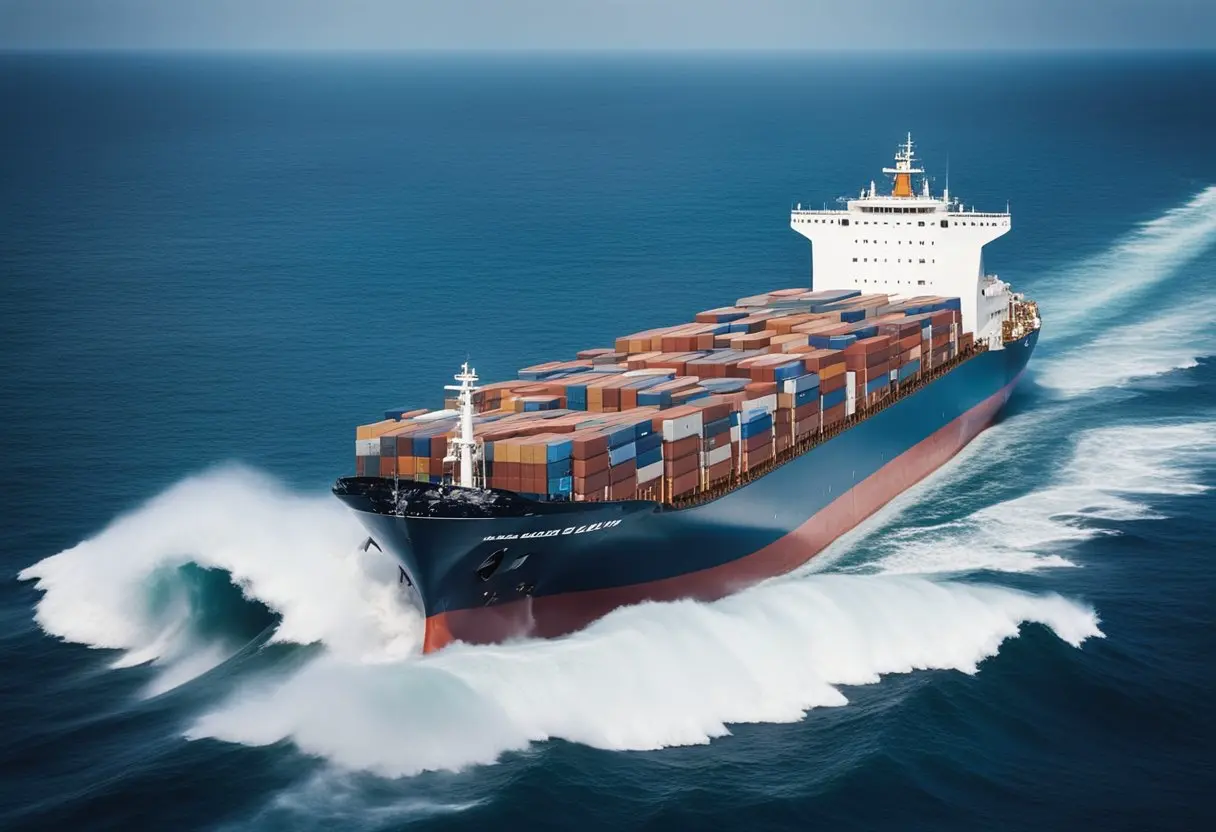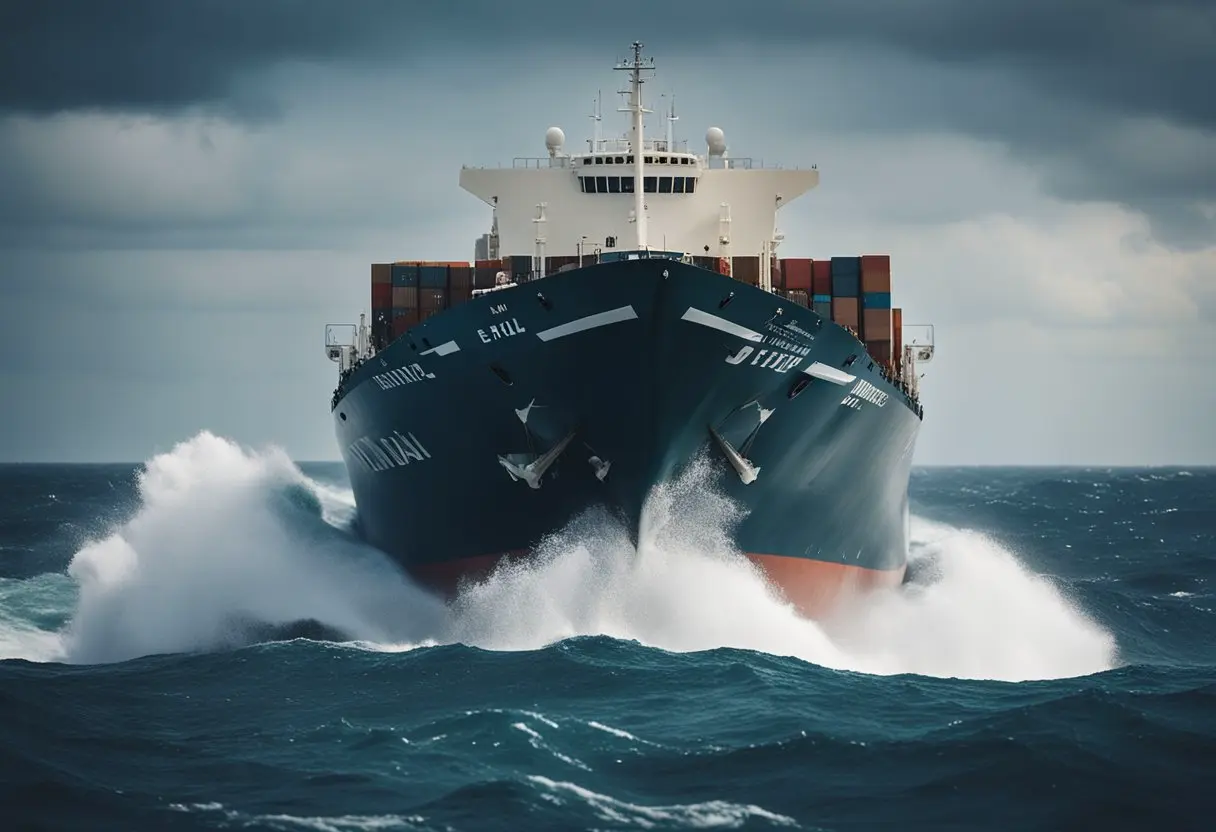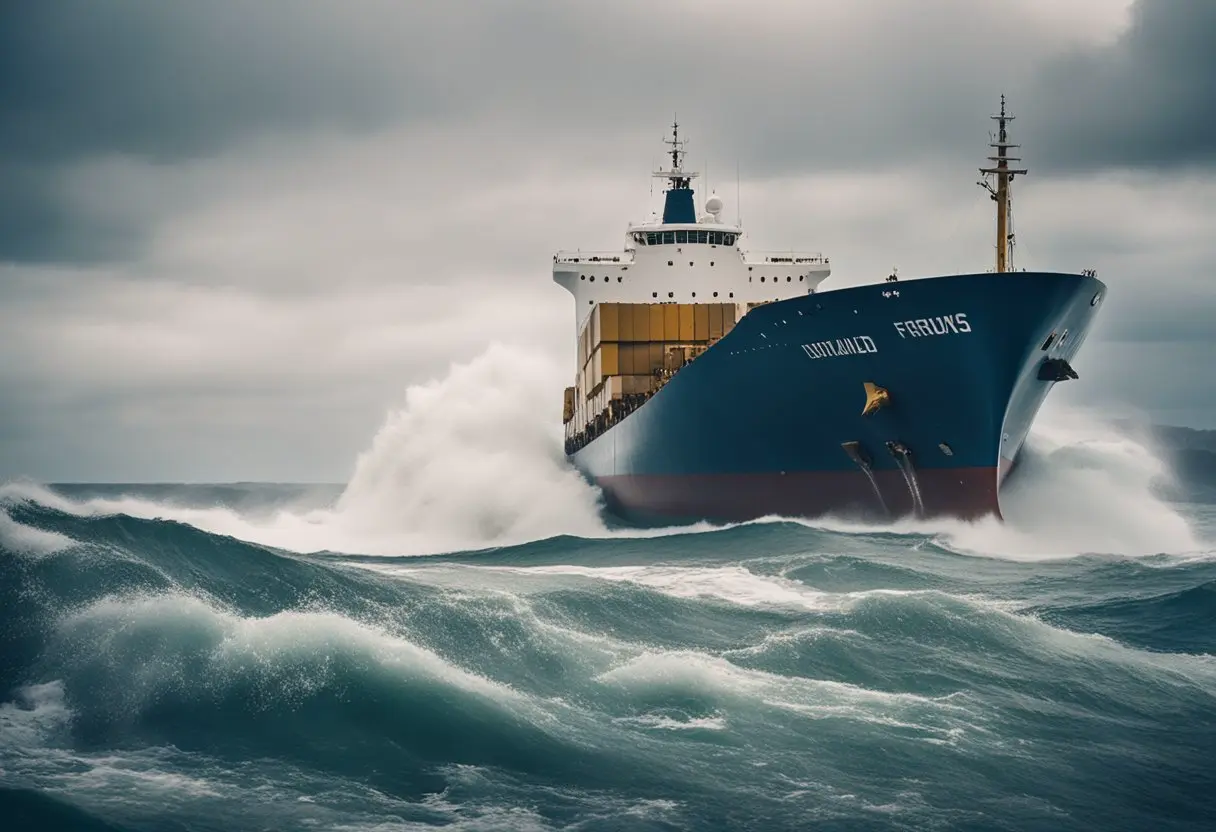Why Big Cargo Ships Are Hard to Sink: Big cargo ships are an essential component of the global economy, transporting goods across the oceans to every corner of the world. These massive vessels can carry thousands of containers, weighing millions of tons, yet they rarely sink. But why is that? Why are big cargo ships so hard to sink, despite the vast amounts of weight they carry and the unpredictable nature of the ocean?
One reason why cargo ships are hard to sink is due to their size and design. These ships are built to withstand the harsh conditions of the open sea, with reinforced hulls and watertight compartments that prevent water from flooding the ship. Additionally, cargo ships are equipped with advanced navigation systems and weather forecasting technology that allows them to avoid dangerous weather conditions and rough seas.
Another reason why cargo ships are hard to sink is due to the density of the objects they carry. The weight of the cargo helps to keep the ship stable and prevents it from capsizing. The density of the cargo is so important that some cargo ships are designed to carry ballast water to adjust the ship’s weight and balance. Overall, the combination of size, design, and cargo density makes big cargo ships incredibly resilient and capable of withstanding even the toughest conditions at sea.
Design and Engineering of Ships

Watertight Compartments
One of the key design features of cargo ships is the use of watertight compartments. These compartments are sealed off from each other and the outside environment, allowing the ship to stay afloat even if one or more compartments become flooded. The use of watertight compartments is a simple yet effective way to prevent a ship from sinking.
Bulkheads and Double Hulls
Another important design feature of cargo ships is the use of bulkheads and double hulls. Bulkheads are walls that separate different sections of the ship, while double hulls provide an additional layer of protection against hull breaches. The use of double hulls is particularly important for oil tankers, as it helps prevent oil spills in the event of a collision or grounding.
Low Center of Gravity
A cargo ship’s center of gravity is an important factor in its stability. Ships with a higher center of gravity are more prone to capsizing, while ships with a lower center of gravity are more stable. To achieve a low center of gravity, cargo ships are designed with heavy machinery and cargo located on the lower decks, while lighter cargo is stored on the upper decks.
In addition to these features, cargo ships are also designed with a U-shaped hull, which adds to its buoyant nature by filling it with more air than cargo and giving it a better balance. Load lines are also used to ensure that the ship is not overloaded, which can compromise its stability and safety.
Overall, the design and engineering of cargo ships are crucial in ensuring their safety and ability to stay afloat. By incorporating features such as watertight compartments, bulkheads and double hulls, and a low center of gravity, cargo ships can withstand the harsh conditions of the open sea and transport goods around the world with confidence.
Regulations and Safety Measures

The International Maritime Organization (IMO) is responsible for setting standards for the safety and security of international shipping. The organization has developed several regulations that are designed to ensure the safe operation of cargo ships. These regulations cover a wide range of topics, including ship design, construction, and equipment, as well as crew training and safety procedures.
One of the most important IMO regulations is the International Convention for the Safety of Life at Sea (SOLAS). This convention sets out minimum safety standards for all ships engaged in international trade, including cargo ships. SOLAS requires that all cargo ships be equipped with a range of safety equipment, such as lifeboats, fire extinguishers, and emergency lighting. The convention also sets out requirements for crew training and drills, as well as for regular safety inspections of the ship and its equipment.
Regular Inspections and Maintenance
In addition to complying with IMO regulations, cargo ship operators must also ensure that their ships are regularly inspected and maintained. Regular inspections are essential to identify any potential safety hazards or maintenance issues before they become serious problems.
Inspections are typically carried out by independent surveyors who are authorized by the flag state of the ship. These surveyors will check the ship’s equipment, machinery, and systems to ensure that they are in good working order. Any deficiencies or defects that are identified during the inspection must be corrected before the ship is allowed to sail.
Maintenance is also an essential part of ensuring the safe operation of cargo ships. Regular maintenance can help to prevent equipment failures and other safety hazards. Maintenance activities can include everything from routine checks and lubrication to major repairs and overhauls.
By complying with IMO regulations and ensuring that their ships are regularly inspected and maintained, cargo ship operators can help minimize the risk of accidents and ensure the safe and efficient operation of their vessels.
Cargo Ship Operations

Ballast Systems
One of the key factors that make big cargo ships hard to sink is their ballast systems. These systems are used to control the ship’s stability and buoyancy by adjusting the weight distribution of the cargo and ballast water. Ballast water is taken on board when the ship is empty, and it is discharged at the destination port when the cargo is unloaded. The ballast water is used to balance the weight of the cargo and ensure that the ship remains stable and upright.
Cargo Distribution
Another critical factor that contributes to the stability of cargo ships is the distribution of cargo. Cargo ships are designed to carry large quantities of cargo, and the weight of the cargo must be distributed evenly across the ship’s hull to ensure that the ship remains stable. The cargo is loaded and distributed in a way that ensures that the ship’s center of gravity remains low, which helps to prevent the ship from tilting or capsizing.
In summary, the ballast systems and cargo distribution are two critical factors that make big cargo ships hard to sink. These systems ensure that the ship remains stable and upright, even in rough seas or extreme weather conditions.
Emergency Response Protocols
Cargo ships are complex vessels that require careful handling and maintenance to ensure they remain seaworthy. Despite the best efforts of ship owners and operators, however, accidents and emergencies can still occur. In such situations, the crew must follow established emergency response protocols to minimize the risk of injury, loss of life, and environmental damage.
Damage Control
When a cargo ship experiences damage, the crew must act quickly to contain the situation and prevent further harm. The first step is to assess the extent of the damage and determine its impact on the ship’s stability and seaworthiness. If necessary, the crew may need to jettison cargo or ballast to maintain the ship’s balance and prevent it from capsizing.
Once the situation has been stabilized, the crew can begin to repair the damage. This may involve patching holes, welding or bolting on new plates, or even cutting away damaged sections of the ship. The crew must also be prepared to deal with any fires that may have broken out as a result of the damage.
Evacuation Procedures
In some cases, it may be necessary to evacuate the crew and abandon the ship. This is typically only done as a last resort, as it can be dangerous and difficult to do so in the middle of the ocean. If evacuation is necessary, the crew must follow established procedures to ensure that everyone is safely transported to a nearby vessel or shore.
The crew must also be prepared to deal with any environmental damage that may have occurred as a result of the emergency. This may involve deploying oil booms or other containment measures to prevent oil spills from spreading. The crew may also need to work with local authorities and environmental organizations to coordinate cleanup efforts and minimize the impact on the surrounding ecosystem.
In conclusion, cargo ships are complex vessels that require careful handling and maintenance to ensure they remain seaworthy. In the event of an emergency, the crew must follow established emergency response protocols to minimize the risk of injury, loss of life, and environmental damage. By remaining calm and working together, the crew can help to ensure the safety of everyone on board and prevent further harm to the ship and the surrounding environment.
Historical Perspectives
Famous Incidents
Throughout history, there have been many instances of ships sinking due to various reasons. One of the most famous incidents was the sinking of the Titanic in 1912. The Titanic was considered unsinkable due to its advanced technology and safety measures, but it hit an iceberg and sank on its maiden voyage, resulting in the loss of over 1,500 lives.
Another famous incident was the sinking of the Lusitania in 1915. The Lusitania was a British passenger ship that was torpedoed by a German submarine during World War I. This incident played a significant role in the United States’ decision to enter the war.
Improvements Over Time
Over time, ships have become safer and more resilient. Modern cargo ships are designed to withstand extreme weather conditions, including heavy storms and high waves. They are equipped with advanced technology, including radar and GPS, to help navigate through rough waters and avoid collisions.
Additionally, cargo ships are built with multiple compartments to prevent flooding and sinking. This means that even if one compartment is damaged, the ship can still stay afloat. The use of watertight doors and hatches also helps to prevent water from entering the ship.
Overall, improvements in technology and safety measures have made cargo ships much safer than they were in the past. While accidents still occur, the chances of a large cargo ship sinking due to external factors are much lower than they used to be.
FAQs About Why Big Cargo Ships Are Hard to Sink
What principles allow large ships to remain buoyant?
Large ships remain buoyant due to the principle of buoyancy, which states that any object submerged in a fluid will experience an upward force that is equal to the weight of the fluid displaced by the object. This force is known as the buoyant force, and it acts in the opposite direction to the weight of the ship. The buoyant force is what makes it possible for large ships to float on water.
How is the stability of massive cargo ships maintained?
The stability of massive cargo ships is maintained through the use of ballast tanks, which are filled with water to adjust the weight distribution of the ship. The ballast tanks can be filled or emptied to change the center of gravity of the ship and maintain its stability.
What factors contribute to the buoyancy of cruise ships?
The buoyancy of cruise ships is determined by several factors, including the shape of the hull, the weight and distribution of the cargo, and the amount of air trapped in the ship’s compartments. Cruise ships are designed to be as buoyant as possible to ensure their safety and stability.
What are the design features that help prevent cargo ships from capsizing?
Cargo ships are designed with many features that help prevent them from capsizing, including a low center of gravity, a wide beam, and a deep draft. These design features help to ensure that the ship remains stable and upright, even in rough seas.
How long can a cruise ship withstand flooding before sinking?
The amount of time that a cruise ship can withstand flooding before sinking depends on many factors, including the size and location of the breach, the amount of water entering the ship, and the ability of the crew to respond to the emergency. In general, modern cruise ships are designed to be able to withstand flooding for several hours, giving the crew time to respond and evacuate passengers if necessary.
What are the historical instances of large ships sinking and what were the causes?
There have been several historical instances of large ships sinking, including the Titanic, which sank after hitting an iceberg, and the Costa Concordia, which capsized after hitting a reef. Other causes of ship sinking include severe weather, collisions with other vessels, and mechanical failure.
Related Posts:
